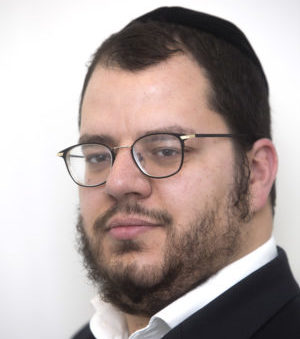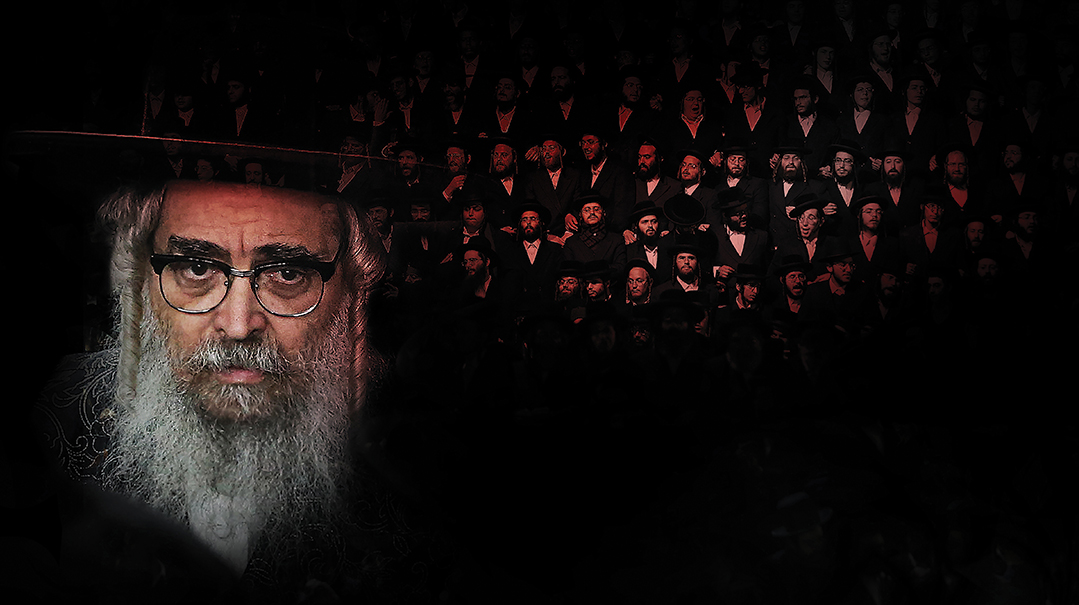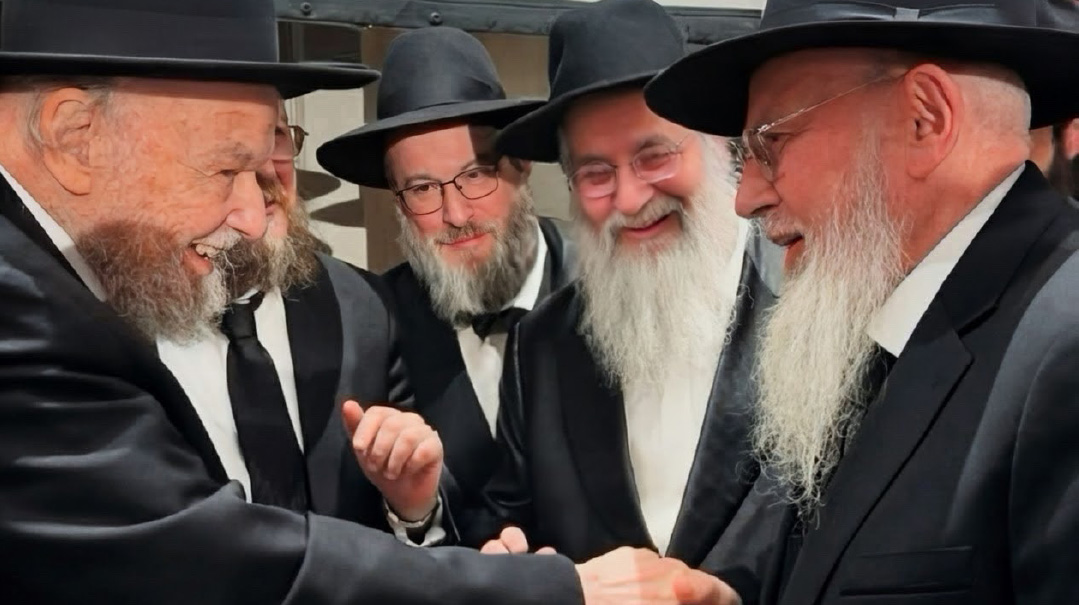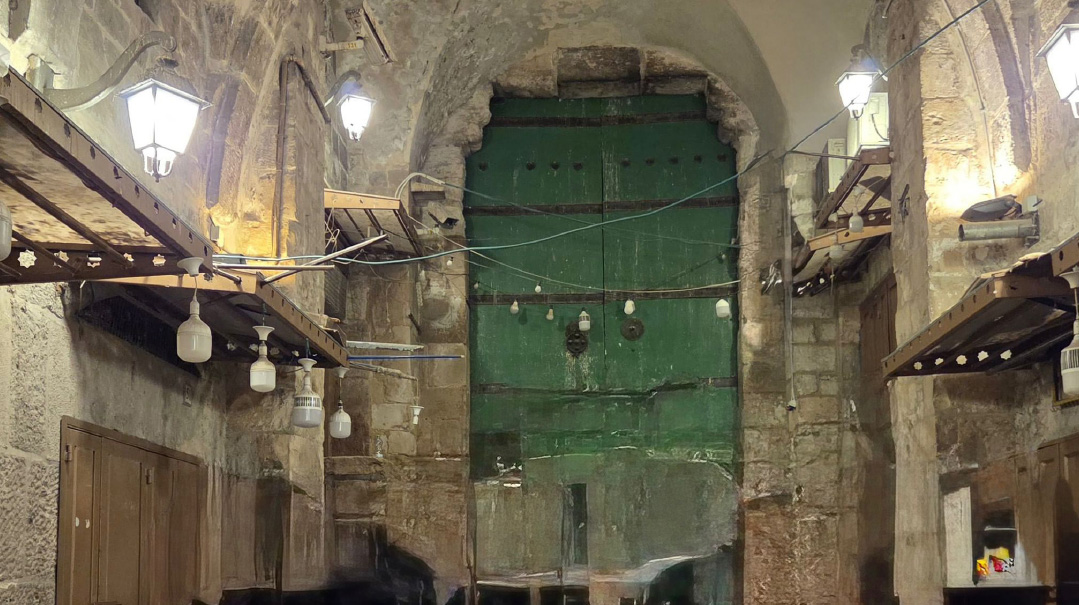Locked Inside, The Rebbe Still Leads


Closed in by corona, Rav Aharon Teitelbaum of Satmar still leads his flock

Reb Hillel Weiss has seen much over the past 70 years, but even a lifetime in the shadow of the rebbes of Satmar couldn’t prepare him for this sight. The Satmar Rebbe stood in the long, empty corridor, broke down, and cried.
It was Wednesday, the 22nd of Adar. The shuls and batei medrash in Kiryas Joel had all been closed that morning, and aside from a few confirmed procrastinators hurriedly packing their tefillin bags and talleisim at the urging of the gabbaim, the huge main shul was completely empty.
Several shuls had already closed the night before, when a call came directly from the White House, asking the Rebbe, Rav Aharon Teitelbaum, to set an example, knowing that if he would close his shul, hundreds of other shuls would follow.
A White House source perceived that the Rebbe would have to act decisively for the myriad satellite institutions and businesses — schools, slaughterhouses, the kimpeturin home, all of it — to take the ruling seriously.
“We want Rabbi Teitelbaum to understand that the situation here could get even worse than Italy. They laughed at the directives there too at first, and we’re now seeing the results.”
The Rebbe listened, considered, and then accepted the instructions. Completely. He explained what would happen if masses of people were infected all at once. This was an “es la’asos l’Hashem heferu Torasecha” — sometimes you have to take drastic measures, even though they might seem counterintuitive to Torah.
The call from the White House led to an urgent meeting of the heads of the kehillah, the educational institutions, and the local Hatzolah. The decision came to the tzibbur from the Rebbe’s house on Sanz Street: We’re closing the mosdos. The shuls will be locked. The yeshivos will close their doors. There will be no more kabbalas kahal.
The next morning, the Rebbe left his house and took the shortcut to Forest Road, the main street of Kiryas Joel. A short distance behind walked the new attendant who had just been assigned to him, after the regular hoiz bochur tested positive for corona. At that point, no one suspected that the Rebbe himself would test positive just two days later.
The Rebbe headed to the great Satmar shul where his private mikveh is located, adjacent to that of the general kehillah. On regular mornings, the Rebbe would pass by the Heichal HaTorah, a huge learning-only room in every Satmar shul around the world, one of the Rebbe’s innovations which essentially define his leadership and vision. In better times, the Rebbe would converse with the chassidim near the entrance, schmoozing with this one, joking with that one, offering a kind word to a third, and then go on his way. That morning though, his beloved Heichal HaTorah was dark and empty. The corridor, usually bustling with noise and activity, was silent.
But Reb Hillel, the “mikveh Yid” who spends all day learning in his little nook, was at his post, a guard standing sentry to open the door for the Rebbe’s use.
Tears filled the Rebbe’s eyes as he saw the faithful chassid.
“Reb Hillel,” he said, “I’ve finally grasped something that I was never able to understand before. I heard from my father, that when he was returning to Sighet after the Holocaust, he passed through Klausenburg, a city he remembered as teeming with vibrant Jewish life before the war… but he saw it desolate, the beis medrash empty, not a single Jew in sight, and his heart broke. Until today, I didn’t understand why my father placed so much emphasis on the darkened beis medrash after experiencing the crushing war, the Holocaust, and the destruction of Hungarian Jewry — but today, I think I understand.”
Two days later, Erev Shabbos parshas Vayakhel-Pekudei, the news spead. The Rebbe had himself fallen victim to the dreaded virus.
The Rebbe had been careful, reacting as soon as he’d first heard of the coronavirus. Traditionally, when a chassid goes into the Satmar Rebbe to give him a kvittel, the Rebbe holds the chassid’s hand as he gives the brachah, and before leaving, the chassid reverentially kisses the Rebbe’s hand. This year, the practice ended. At the entrance to his room stood gabbaim with hand-sanitizer and rubbing alcohol, insisting visitors clean their hands before going in. Chassidim were not denied access to the Rebbe, but they were told to keep a physical distance of six feet.
On the night of Purim a week before, the Satmar bochurim traditionally present the Rebbe with a special mishloach manos along with a pledge to keep away from technology for the coming year, and the Rebbe gives each one a special coin in return. This year the Rebbe didn’t shake their hands or personally distribute the coins.
At the height of the Purim tish, one of the gabbaim approached the Rebbe to tell him that flights to and from Europe were being cancelled. The Rebbe had just concluded his divrei Torah, but he got up to speak again, this time ordering all the bochurim who weren’t American citizens to fly home at the next opportunity.
A few hours before the Shabbos following Purim, parshas Ki Sisa, New York Governor Andrew Cuomo issued new emergency regulations, outlawing gatherings of more than 500 people at a time. The Rebbe ordered the Shabbos davening to go ahead in the main beis medrash, but to be divided into different minyanim. While usually the movable walls between the different sections of the beis medrash are removed to allow for a single minyan for the entire chassidus, this time the mechitzos were left in their place. On Shabbos night the Rebbe davened in his home; only members of the yeshivah were allowed to join the Shabbos night tish, and only kollel avreichim were allowed in at Shalosh Seudos.
It was during the next week that the coronavirus burst across America in full force. On Thursday, the day after the closures of the mosdos, the Rebbe’s doctor had informed the Rebbe’s meshamesh, Rav Chaim Shlomo Fisher, that one of the hoiz bochurim, the Rebbe’s personal attendant, had tested positive. The following day, it was practically a given that the Rebbe would test positive as well.
One of the Rebbe’s confidantes told Mishpacha that when the Rebbe got the news, he didn’t flinch. “Gam zu letovah,” he said simply. Then he turned to his room and steeped himself in learning. The Rebbe would spend that Shabbos davening and learning alone in his room, while a minyan gathered outside the door for davening. He ate the seudos alone as well, not wanting to risk the Rebbetzin’s health.
The elders of the kehillah came to the Rebbe’s house for Minchah and Shalosh Seudos in order to hear his weekly “shaleshudes Torah.” To their surprise, the Rebbe wouldn’t talk, even to the small crowd. “My grandfather, the Atzei Chaim, didn’t deliver divrei Torah during the epidemic in Sighet,” he told the waiting guests.
Since the Rebbe’s test results were announced, the live broadcasts from the court of Satmar in Kiryas Joel have become a daily routine for thousands of chassidim. The phone line, “Kol Hisachdus Ha’avreichim,” transmits Torah shiurim all day long, from 5 a.m. to midnight, interspersed with health updates and items related to the upcoming Yom Tov. During the Rebbe’s davening hours, those who can’t leave their houses tune in to hear the davening broadcast from outside the Rebbe’s room.
Even, or perhaps especially, in quarantine, the Rebbe is anxious to get in his learning quotas. For him, the ordeal is an opportunity to fulfill debts of Torah that public life and duties have kept him from paying until now. He’s also using the time in solitude to finally write down reams of chiddushei Torah long stored in his memory.
In light of the continuing spread of the virus in the kehillah, the Rebbe sets aside several hours every afternoon to daven for the sick and their families, whose names he receives through his gabbaim. The phone in the Rebbe’s house rings non-stop — the number of sick people is inconceivable. They and their families need a yeshuah, in addition to the Rebbe’s calm and reassuring advice.
And then, close to midnight on Monday, the 5th of Nissan, the Rebbetzin began having difficulty breathing. Hatzolah members rushed to the Rebbe’s house, and the Rebbetzin was taken to Mount Sinai hospital, where she tested positive for coronavirus, and, due to some preexisting health issues, suffered lung failure. As of this writing, she remains alone, isolated, and on life support.
To his prayers for his flock and for all the sick of Klal Yisrael, the Rebbe now adds another tefillah, a heartbreaking personal one, for the Rebbetzin Sasha bas Esther Leah lerefuah sheleimah.
This scion of rebbes is the daughter of the Yeshuos Moshe of Vizhnitz ztz”l, sister to the current Vizhnitz Rebbes, and to the wives of the Belzer and Skverer Rebbes.
Meanwhile, the Rebbe keeps davening, the tefillos emerging from the depths his heart. He’s pleading for his Rebbetzin, for his kehillah, for Am Yisrael.
The Rebbe hasn’t forgotten about the rest of the chassidim either. He calls a few dozen chassidim each day, primarily those who are in isolation, which means, as per his directives, anyone over 60.
During one such conversation, Rosh Hakahal Reb Meir Zelig Rispler got an urgent request: The Rebbe asked him to set up an organization to provide food for those in isolation and elderly people who cannot leave their homes. Most importantly, the Rebbe asked, it should provide Pesach needs to those who have lost their source of livelihood. The Rebbe placed special emphasis on helping young married men who cannot go to their parents’ homes and now have to make Pesach and the Sedarim for the first time.
From his own quarantine room, the Rebbe penned a letter of chizuk in emunah and bitachon, including clear instructions on how a person should conduct himself during this times. He demands that his talmidim not occupy themselves following all the latest news feeds, and instead, take advantage of the time alone to do teshuvah and rectify their deeds.
“It is an eis tzarah leYaakov,” the Rebbe begins the letter. “These are days of destruction in the world; we are enduring difficult days because of the dangerous spread of the infectious disease… The mainstays of the world of Torah, tefillah, and taharah have been shut down, and above all, tens of thousands of young children who normally learn Torah in cheder are now idle at home, and it is upon their learning that the world stands. The elderly have been shut in indefinitely, and the shuls and batei medrash around the world have closed their doors. And there is so much suffering, body and soul, over the lost livelihoods in Klal Yisrael…”
The Rebbe continues, explaining that the fact of not yet having a vaccine or cure for corona proves to anyone who put faith in the great edifices of commerce, power, or government that the Hand of Hashem can easily shift the balance of power. “Strengthen yourselves, and daven to your King with hope for good things, because Hashem will never abandon us, and we should remove worry of tomorrow from our hearts. Lech ami ba bechadrei emunah ubitachon b’Hashem, chavi kimat rega ad ya’avor za’am.”
The Rebbe calls for people to daven and especially to recite Tehillim each day in times of trouble such as this. He also noted the power of reciting Parshas Haketores and asked that even the women, who do not have much time to daven, “should set aside time to say Parshas Haketores twice a day, morning and evening, as it has a great segulah.”
The Rebbe notes the possibility that “this is a unique opportunity to fulfill the pasuk of ‘Velimadetem osam es bneichem’ in the simple meaning, to learn Torah with your children. To really listen to them while guiding them to prepare for Yom Tov with joy in their hearts and to lift the spirits at home and be a source of chizuk and hope in all that’s happening in the world. Our yeshuah is near, and not, chalilah, the opposite.”
On Rosh Chodesh Nissan, the day of a global tefillah, the Rebbe told his chassidim, “We daven, ‘Avinu Malkeinu, pesach lanu shaar b’eis ne’ilas shaar.’ Specifically when the gates of the houses of tefillah and batei medrash are locked, we ask that the Gates of Mercy be opened to hear our tefillos.”
At the same time, he reiterated that it behooves the community to stay at home and “not to try to outsmart the rules by making minyanim. We need to understand that this is the Will of Hashem.”
The Rebbe added a special call to those of his age — “aged 60 and up” — although he has already passed 70 — to be doubly careful not to go out of the house at all. “Please, please, have mercy on your souls, contain yourselves at home until the furor passes… This is all part of our obligation to fulfill ‘Venishmartem me’od lenafshoseichem.’ ”
At this time of year, the Rebbe usually spends part of every day in the slaughterhouses and the matzah bakeries. This year, the managers received explicit guidance regarding how to comply with the new rules imposed by the authorities. The matzah bakery, for example, was closed to public visitors and to frontal customer sales. And while many in the community make a point of coming to the slaughterhouse themselves between Purim and Pesach to salt their chickens or oversee the shechitah, that’s not happening this year. Only those specifically needed for the shechitah process may enter the slaughterhouse.
In more calm times, the Satmar year revolves around the sugya that the Rebbe will choose, and now, too, things are no different, at least for the Rebbe.
Normally, 30 days before Yom Tov — Pesach, Shavuos, Succos, and Chanukah — the Rebbe chooses a sugya that the bochurim and avreichim will study. From a month before Pesach, the Rebbe would give a shiur each day on that sugya in the yeshivah, which would culminate in the Shabbos Hagadol derashah in the main beis medrash. There, the Rebbe would share some of his chiddushim on this sugya, saving the rest for the Chol Hamoed shiur.
With the closure of the yeshivah and the establishment of the Kol Hisachdus Ha’avreichim hotline, many chassidim hoped that the Rebbe would give his daily shiur on the sugya through the phone. But the Rebbe had made his stance very clear. Now is not a time for speaking. He took his pen and wrote a powerful chizuk letter to his chassidim, replete with demands of them at this time. But he will not give the shiur. It is a time, he says, of mageifah, of plague. A time of fury.
On the other hand, says his current attendant, the Rebbe hasn’t totally put the minhag aside. He’s still learning the sugya he was going to give shiurim on, that would be the basis for his Shabbos Hagadol derashah.
Because throughout all the confusion, the Torah is reality. Yom Tov still beckons, the sugyos and halachos still the greatest entranceway to its great light.
And so alone, over his thick Gemara, miles away from his ailing Rebbetzin, separated by walls from his beloved chassidim, the Satmar Rebbe toils in learning: Shul is closed and tishen are cancelled and sitting with chassidim is forbidden, so there is only this.
The Torah itself.
(Originally featured in Mishpacha, Issue 806)
Oops! We could not locate your form.













